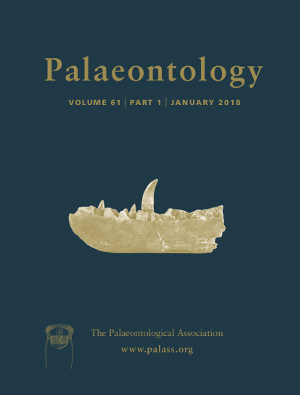Reg. Charity No. 1168330

Based on data derived from computed tomography, we demonstrate that integrating 2D and 3D morphological data from ammonoid shells represents an important new approach for investigating the palaeobiology of ammonoids. Characterization of ammonite morphology has long been constrained to 2D data, with only a few studies collecting ontogenetic data in 180° steps. Here we combine this traditional approach with 3D data collected from high‐resolution nano‐computed tomography. Ontogenetic morphological data on the hollow shell of a juvenile ammonite Kosmoceras (Jurassic, Callovian) was collected. 2D data was collected in 10° steps and show significant changes in shell morphology. Preserved hollow spines show multiple mineralized membranes never reported before, representing temporal changes in the ammonoid mantle tissue. 3D data show that chamber volumes do not always increase exponentially, as was generally assumed, but may represent a proxy for life events, such as stress phases. Furthermore, chamber volume cannot be simply derived from septal spacing in forms comparable to Kosmoceras. Vogel numbers represent a 3D parameter for chamber shape, and those for Kosmoceras are similar to other ammonoids (Arnsbergites, Amauroceras) and modern cephalopods (Nautilus, Spirula). Two methods to virtually document the suture line ontogeny, used to document phylogenetic relationships of larger taxonomic entities, were applied for the first time and present a promising alternative to hand drawings. The curvature of the chamber surfaces increases during ontogeny due to increasing strength of ornamentation and septal complexity. As this may allow for faster handling of cameral liquid, it could compensate for decreasing SA/V ratios through ontogeny.